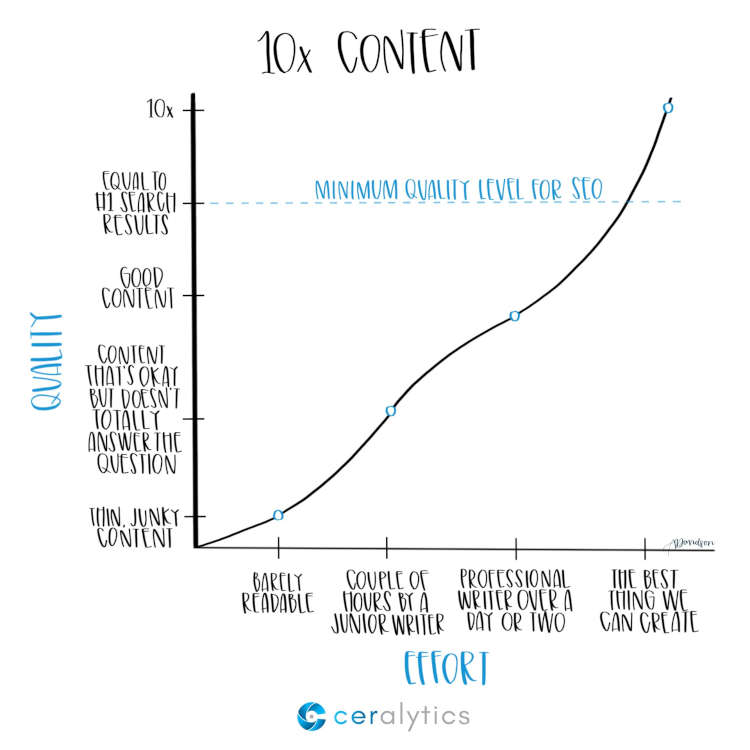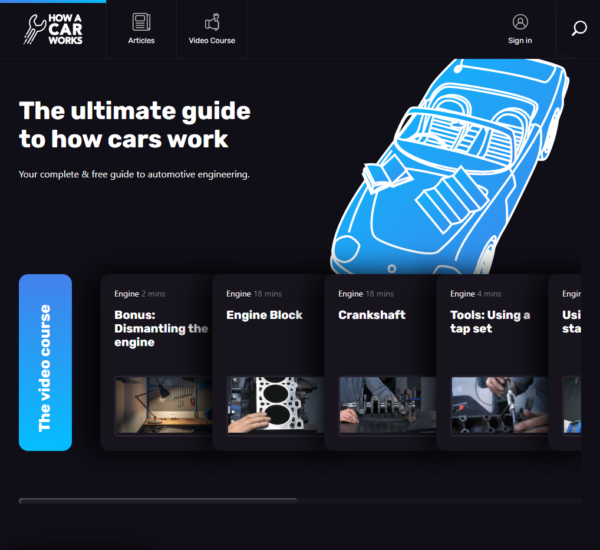It’s not enough to ‘write content’. You have to publish resources.

Warning: DOMDocument::loadHTML(): Tag figure invalid in Entity, line: 90 in /home/staging-yoast/staging.yoast.com/versions/090f3961cbf57f54d9ba9aa8bc27a511a3bff98d/core-yoastcom/WordPress/Settings/TOC.php on line 66
Warning: DOMDocument::loadHTML(): Tag figcaption invalid in Entity, line: 90 in /home/staging-yoast/staging.yoast.com/versions/090f3961cbf57f54d9ba9aa8bc27a511a3bff98d/core-yoastcom/WordPress/Settings/TOC.php on line 66
Warning: DOMDocument::loadHTML(): Tag figure invalid in Entity, line: 162 in /home/staging-yoast/staging.yoast.com/versions/090f3961cbf57f54d9ba9aa8bc27a511a3bff98d/core-yoastcom/WordPress/Settings/TOC.php on line 66
Warning: DOMDocument::loadHTML(): Tag figcaption invalid in Entity, line: 162 in /home/staging-yoast/staging.yoast.com/versions/090f3961cbf57f54d9ba9aa8bc27a511a3bff98d/core-yoastcom/WordPress/Settings/TOC.php on line 66
Warning: DOMDocument::loadHTML(): Tag figure invalid in Entity, line: 214 in /home/staging-yoast/staging.yoast.com/versions/090f3961cbf57f54d9ba9aa8bc27a511a3bff98d/core-yoastcom/WordPress/Settings/TOC.php on line 66
Warning: DOMDocument::loadHTML(): Tag figcaption invalid in Entity, line: 214 in /home/staging-yoast/staging.yoast.com/versions/090f3961cbf57f54d9ba9aa8bc27a511a3bff98d/core-yoastcom/WordPress/Settings/TOC.php on line 66
Warning: DOMDocument::loadHTML(): Tag figure invalid in Entity, line: 246 in /home/staging-yoast/staging.yoast.com/versions/090f3961cbf57f54d9ba9aa8bc27a511a3bff98d/core-yoastcom/WordPress/Settings/TOC.php on line 66
Warning: DOMDocument::loadHTML(): Tag figcaption invalid in Entity, line: 246 in /home/staging-yoast/staging.yoast.com/versions/090f3961cbf57f54d9ba9aa8bc27a511a3bff98d/core-yoastcom/WordPress/Settings/TOC.php on line 66
Warning: DOMDocument::loadHTML(): Tag figure invalid in Entity, line: 286 in /home/staging-yoast/staging.yoast.com/versions/090f3961cbf57f54d9ba9aa8bc27a511a3bff98d/core-yoastcom/WordPress/Settings/TOC.php on line 66
Warning: DOMDocument::loadHTML(): Tag figcaption invalid in Entity, line: 286 in /home/staging-yoast/staging.yoast.com/versions/090f3961cbf57f54d9ba9aa8bc27a511a3bff98d/core-yoastcom/WordPress/Settings/TOC.php on line 66
Sometimes, having a great website with great content isn’t enough. Even if you’re doing everything right, you might still fall behind a stronger, faster, better-resourced competitor. In almost every niche, SEO is about more than just improving your site — it’s about beating every other site. If you want to win, you have to do more than put words on pages. To beat your competitors, you have to publish resources. Here’s my take on why, how, and what happens next.
- SEO doesn't happen in a vacuum
- Good content might not be good enough
- To win, you must solve searcher problems
- Solving problems is resource intensive
- Cue, Gutenberg
- Changing roles and workflows
- What's next?
SEO doesn’t happen in a vacuum
To succeed in search, you need to make sure that your website, content, and brand is the best possible fit for your audience’s needs. You need to be discovered, and be chosen. That takes time, effort, and resources.
But you’re not the only one trying to improve your content. Your competitors are also working to improve their websites, pages, and brands. Depending on your niche, and your location, there might be dozens of other companies who can meet your audience’s needs. Or hundreds. Maybe thousands.
Many of those competitors have goals, targets, and teams. Some of them have livelihoods tied to their success. Some of them are huge businesses. None of them are sitting still. They’re all hungry to win.
But when a user in your niche searches, Google will only surface content from a tiny fraction of those businesses. An even smaller number of results will get clicked. In many cases, there’ll only be one winner.
So, even if you follow all of the best SEO advice in the world, you may still lose to competitors who have better websites, better content, and stronger brands. Perhaps they spend more time, money and resources on improving their SEO than you ever could. And if that’s the case, then the gap is only going to get wider over time.
In competitive niches, SEO is about more than just improving your site – it’s about beating your competitors. It’s a fight for survival.
To win, you have to stand out from the crowd. You have to do more than just write more posts, and optimize more pages. To win, you have to publish resources.
Good content might not be good enough
Since the early days of online marketing, we’ve had a relatively level playing field when it came to content. One of the great things about the internet is that small businesses can compete with giants in the search results, just by writing compelling, relevant, useful information around their areas of expertise.
In some cases, small, local, independent site owners can beat a big business and national chains by writing authentic, passionate, content about their craft. We see lots of examples where users (and therefore Google) reward their compelling product information, detailed how-to guides, and blog posts, over the often generic information produced by larger or less personable companies.
But that’s not always the case. Words can be bought. Money can be spent, at scale, to shortcut the challenges of writing and publishing quality content. Mass-production and outsourcing of content production is a common practice for larger, well-resourced organizations. It’s often the case that the larger the company, the more resource they have to write pages (even if they outsource the work), and they drown out other websites.
That means that whether you’re a blogger, a baker, a beekeeper, or even a big business, it’s not enough to ‘be good’, or to ‘do SEO’. Your pages, your posts and your content has to compete with everyone in your sector, and you have to beat all of them.
To win, you must solve searcher problems
It’s a helpful mental model assume that each keyword (or keyphrase) you want to rank for represents at least one question, and that many of those questions represent needs, desires or problems.
To be discovered, and to win for that search, you need to have the best page on the internet for helping users to solve their particular problem.
But what does that mean? How is that different from normal SEO advice, which tells you to “write great content”?
To make this practical, we’re going to need an example.
Introducing Emily
Emily runs a local, independent interior design business. She wants to grow her audience and her sales, so she uses SEO as a marketing channel.

For the last year, she’s spent a few hours per week writing blogs post about her latest projects, and describing her products and services. Traffic to her site has grown steadily, because of the hard work she’s done optimizing her site and her content.
But now her growth is starting to plateau. She sees bigger competitors outranking her, and, she’s not sure what she needs to do to move the needle.
A problem of saturation
The core of her problem is that she’s already reached everybody in her addressable market. She’s already ranking for local searches (like “interior design company [city]“), and, for people who look for her business specifically. But she’s nowhere to be seen for broader or more generic searches around her products and services (like for the keyphrase, “living room layout advice“).
To understand why, we need to think about the intent behind the way in which her audiences search, and the problems those people have.
Let’s take the keyphrase “fitted cupboards“, for example. A searcher who has typed this into Google may actually mean “how much do fitted cupboards cost?“, or, “what’s the difference between a fitted cupboard and a normal cupboard?“, or even, “what kinds of fitted cupboards are there, which might work in my home?“. All of these questions represent a singular problem — that the searcher isn’t an expert in the market, and they don’t know what their options are.
In the real world, it’s rare for people to just decide to buy some furniture, then act. It’s more likely that they’ll start by searching with questions about types, colors, materials, and other topics. They do research, and try to understand their options.
A mismatch between her content, and her audience’s needs
The product pages and blog posts which Emily has been writing are designed to showcase her products and her experience; they’re not designed to answer those kinds of questions. They’re probably not “the best pages on the internet” for users who’re trying to understand their options.
Most of the people searching in this ‘research phase’ aren’t ready to buy yet, so Google is unlikely to show many product pages or stores in its results. It’ll favor informational resources, guides and media.
Emily’s pages are unlikely to be discovered by people who are asking those kinds of questions. Google will return the websites of competitors, household furniture chains, or media giants like Pinterest — sites which either spend more time and money on SEO and content than her, or, which provide types of content, advice and media which she doesn’t.
When those people do know what they want or need, and are ready to spend, it’ll be too late for Emily. Many will already have found inspiration, solutions, or other businesses in the sites and channels they moved through. They’ll have solved their problems without ever getting as far as searching for a specific local business, or encountering Emily’s website.
So, how can she compete?
As an expert in her subject, she’s better positioned to answer the questions — and solve the problems — of her audience better than many her competitors. But to do this, she’ll have to produce a different type of content. She’ll need to make something much deeper, more interesting, more engaging, and more useful than her current pages.
For example, the simplest version of this might be a guide which answers all of these questions, and which does so better than any other competing resource. That might mean writing long-form content, producing videos, creating an interactive tool, or some combination of each of these.
A resource like this is much much more likely to get the links, shares and engagement — which she needs to grow her visibility — than her day-to-day content.
The best version of this, most likely to transform her visibility, rankings and business, would be a piece of ‘10x content‘ — a resource at least ten times better than the current best result for her target keywords. In Emily’ interior design niche, that might be a rich, interactive, media-heavy browsing experience — something much more than just a textual product guide.

Of course, regardless of the scale of her ambition, she still needs to think about SEO. The content production process should start with keyword research, and still needs to get all of the basics right. But, unlike her day-to-day content, she needs to go above-and-beyond in making sure that it comprehensively answers all of her audience’s questions.
If she creates something genuinely good, useful and helpful, then it stands a chance to earn the links, social amplification, and positive user signals that it needs in order to outperform the competition.
She must create content with different objectives
Until now, most of Emily’s content has been written with the intent to rank for a relevant keyword, then to try and convince the visitor that her products and services are the best choice for them.
But the objective of this new type of content isn’t to convince people to buy — it’s to make a resource which users will bookmark, link to, and share with their friends when they have problems. Remember, the majority of this audience isn’t ready or willing to buy — they’re still asking questions and learning about their options.
So, for this different kind of content, she needs to be much more impartial. Answering the questions of her audience means not trying to sell to them, and not trying to convince them that her products the best answer to their questions.
Instead, she has to genuinely help her audience, and provide them with the best answers. Sometimes that might mean helping them to solve their own problem without her, or, even sending them to competitors.
It doesn’t matter that those visitors don’t buy from her, or even if they’re not her core audience. Because over time, the links and citations she her content gets not only help her SEO, but they also grow her brand awareness. Then, when users reach the point when they’re ready to buy, they’re much more likely to think of her, or recommend her.
Solving problems is resource intensive
Creating this kind of content takes huge amounts of time, research, energy and expertise. It might mean that, instead of spending an hour writing a page, you need to spend ten, or a hundred hours. Maybe even more.
That’s a big ask, and not just in terms of the hours of writing. It’s not enough just to write more, because an enormous wall of text likely isn’t a good answer for your audiences. Creating something truly useful and valuable means doing more than writing a page.
To win, you must craft and publish a resource, like one of these examples of 10x content.

Because, chances are, at least one of your competitors already has. They’re already winning the hearts and minds of consumers in your niche — consumers who’ll no longer search for, and find your website. And they’re getting links, social shares and traction which pushes them further and further ahead in the search results.
If you want to grow, you have to create this kind of content.
If you represent a small business, or independent site owner, this undoubtedly sounds like an unrealistic requirement – especially given that these pieces are often the work of more than one person. You’ll need input from designers, developers, writers, subject matter experts and more, otherwise, you content might fall flat.
That’s a lot of work, right? Well, maybe not.
It’s only a lot of work if you’re doing it from scratch
In the examples I’ve referenced, one of the common themes is that these pieces often don’t look, feel, or behave like conventional text-on-a-page content. They have structure, layout, and design components.
That’s often one of the scariest, and most resource-intensive requirements for publishing these kinds of pages.

Until recently, this was one of the largest barriers which prevented smaller and independent content creators from taking on their better-resourced competitors.
But as the tools available to us continue to become more powerful, intuitive and accessible, this kind of content can become a lot less challenging to produce.
The continued evolution of WordPress is making it easier for content producers to construct more complex, sophisticated layouts, without needing development resources.
You still need to do the hard work thinking up and authoring the content, but the construction part of the process is getting easier and easier. In fact, we may not be away far from a time when the technical resource required to publish 10x content goes away entirely, and the playing field between small and large business becomes just a little bit more level.
Cue, Gutenberg
WordPress’ new ‘block editor’ has caused waves and divisions within the community.
The premise is that, rather than writing in a big content editor, you compose your content from blocks. Blocks structure and contain content, and can also have styling/presentation settings.
Love it or hate it, it’s important to understand that Gutenberg is rapidly becoming the backbone of a new era of structured content publishing. Even beyond WordPress, Gutenberg is being adopted as the de-facto content editing experience on the web.
Why is this relevant to us? Because, Gutenberg is (the early stages of) a framework which will make the production of 10x content cheap enough, fast enough, and easy enough to enable everybody to compete on equal footing.

One of the most common objections to adopting WordPress’ new editor is that people say they like to just write. The added complexity of thinking about blocks, structure and layout – of composing a page, rather than just writing it – is an imposition.
That’s fine, if you’re writing just for enjoyment.
But if you want to grow your visibility, grow your audience and rank higher in the search results, then your content needs to compete.
If you’re going to beat everybody else in the search results, you need to do more than just ‘write pages’. You have to take every opportunity to compete, and structuring your content with blocks is one of the most powerful tools in your arsenal.
Instead of just writing, you must compose. You must consider the structure, layout, design and flow of the stories you tell, and publish resources. Gutenberg gives you the tools to do this (and when it doesn’t, chances are that there’s a block plugin which will).
What about other page builders?
Gutenberg isn’t the only tool which allows you to structure content. Other extremely popular page builder plugins (like Site Builder and Elementor) provide similar functionality.
But each of these (and many other) products will increasingly find themselves ‘reinventing the wheel’, as the WordPress editor’s core capabilities begin to deliver the same kind of functionality.
At some point, these tools will likely need to reinvent themselves, and become an interface layer on top of Gutenberg. That’ll be necessary if they want their content and structure to integrate seamlessly with other plugins, and, if they want to produce the kinds of structured data which will power the search engine results pages of the future.
It won’t matter which design tools you’re using to compose and lay out your content; the back-end will all be powered by the block editor, and you’ll need to shift from writing to publishing with blocks.
Changing roles and workflows
Switching from writing to publishing is a big leap. It means changes to processes, mindsets, and skill sets.
It won’t be enough to just write, to ‘just be a writer’. If you’re trying to grow your visibility, you’ll need move out of your comfort zone and consider layout, user experience and design.
Your writing environment will need to shift from starting in Microsoft Word or Google Docs (then pasting your content into WordPress), to working directly into the editor. Because you’ll need to compose the structure and layout of the content as it’s written, as part of a combined, iterative process. It’ll be hard to produce a 10x resource if either the structure or the content is added an afterthought. Your words, and how you present them, need to be considered in parallel.
All of this represents a difficult shift in workflow; most good writing happens when a person is ‘in the zone’, and distraction-free. Having to write and consider layout together is a complex process; but it’s what it’ll take to beat your competitors. We’ll need to re-train ourselves to take advantage of these new opportunities.
All of this may feel understandably uncomfortable. It’s a huge disruption to how we currently write and publish content. But competition will drive change; as other site owners take advantage of these tools, you may be left behind if you choose not to.
“This isn’t fair”
If you just want to write great content, that’s fine. You’ll still be able to reach, help and convert your audiences.
But if you want to grow your reach in a competitive market, but really don’t want to think about blocks and layout, you’ll have to over-invest heavily in other areas of SEO in order to attract, convince and convert audiences — because your website and content will feel comparatively bland to your audience, when held up against your competitors’.
This isn’t necessarily fair. If you have the best product or service in the market, but you can’t (or choose not to) invest in creating rich, ‘top of funnel’ problem-solving content, then, you’re going to struggle to compete against people who do.
In a perfect world, you’d rank first, automatically. But Google is an imperfect system, and it relies on content — and the ways in which users interact with it — as a proxy for quality. That’s unlikely to change any time soon; so for now, you must play by their rules.
What’s next?
If you’re reading this post, you have an advantage over many of your competitors. Chances are that you have a WordPress website, and that you’re familiar with the Gutenberg editor.
That gives you a head start.
Take this opportunity to think about what publishing resources might mean for your content, website or business.
Master the block editor, using advanced layout tools like groups and columns.
Explore new approaches to writing and content production, which bake the design of the piece into its ideation and production.
Surprise and delight your audiences with rich, interactive, problem-solving content, which makes them remember, prefer and recommend you.
Grow your visibility, your rankings, your traffic, and your revenue.
Get there first, because if you don’t, your competitors will.
Let us know how you get on?

Discussion (2)